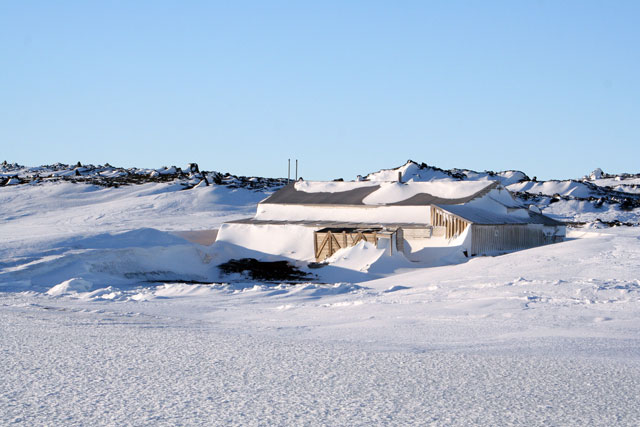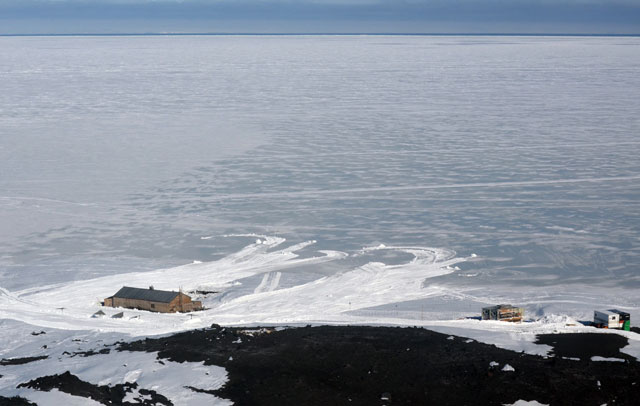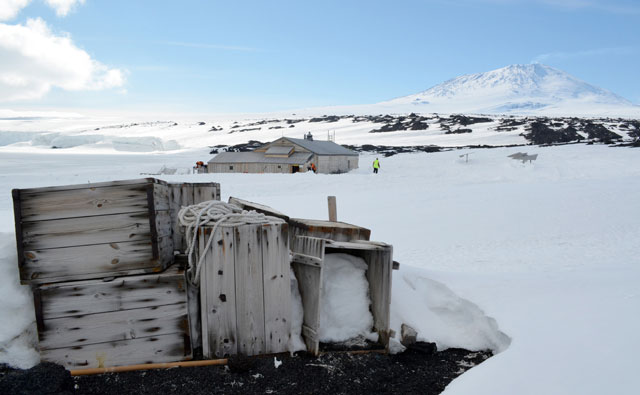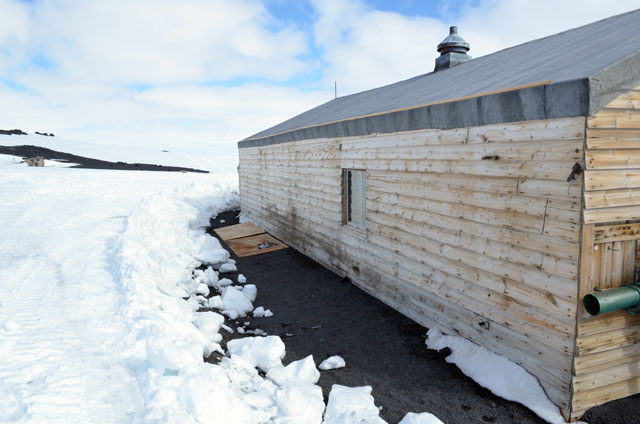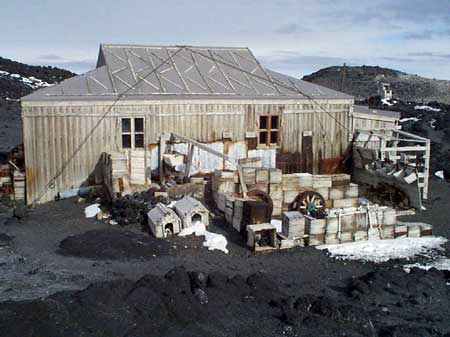|
Preserving the pastAntarctic Heritage Trust restores Scott's expedition hut at Cape EvansPosted January 20, 2012
Al Fastier vividly recalls sloshing through nearly a foot of water as the first tourist of the season to enter what’s become known as the Cape Evans Hut, a century-old wooden building that sits on a sloping black volcanic beach on Ross Island. That was in 2004. Fastier snapped a few photos of the rising tide of water and made sure they reached New Zealand’s Scott Base “I never thought that at that stage I’d be involved in solving the problem,” says Fastier on a recent, mild December day in Antarctica, standing just outside the same building he had seen flooded by meltwater seven years ago. Today, a subterranean dam built into the concrete-hard permafrost diverts any runoff from the snow bank around the hut, which has been nearly restored to its original condition after five summer seasons of intensive work. About 5,000 of its more-than-8,500 artifacts have been painstakingly conserved by an international team of experts. The Trust is a New Zealand-based nonprofit organization devoted to conserving the historic structures built during the Heroic Age of Antarctic Exploration at the turn of the 20th century. In 2002, it kicked off its ambitious Ross Sea Heritage Restoration Project It was from this modest base — measuring about 1,250 square feet and housing as many as 25 British Navy officers, seamen and scientists — that Capt. Robert Falcon Scott launched his bid on Nov. 1, 1911, to become the first person to reach the South Pole, along with four companions. The five men would reach their goal on Jan. 17, 1912, only to perish on the return journey. While the world commemorates the achievements of Scott and his Norwegian rival Roald Amundsen, who beat him to the bottom of the world by about a month, Fastier’s crew nears the end of its race against time to save the largest Heroic era structure in Antarctica. Small organization with a big job“It’s a small New Zealand charity, with an international board and mandate. This is British heritage but of global significance,” says Nigel Watson, executive director of the Antarctic Heritage Trust, during an interview at the organization’s offices, located in the same building with Antarctica New Zealand Watson explains that by the late 1990s it was apparent that the historic structures in the Ross Sea region were succumbing to the withering effects of time and the elements. With help from the New Zealand government and supporting founders the Getty Foundation Then the fundraising The first beneficiary was the hut left from the British Antarctic Expedition of 1907-09 This was the base from which polar explorer Ernest Shackleton made his own attempt for the South Pole, falling short by only about 112 miles, after it became apparent that he and his three companions would likely die if they pushed all the way. Shackleton famously told his wife of his decision to turn around: “I thought you’d rather have a live donkey than a dead lion.” She agreed. It took four years to secure and weatherproof the building and conserve its 5,000 artifacts — including the well-publicized find of two crates of Scotch whiskey, discovered in the ice-choked underbelly of the building. [See previous article — History on ice: Cape Royds hut restoration project plans to recover Shackleton whiskey.] “The global interest in the whisky find has been phenomenal,” Watson says. A battle with the elementsAs the major renovation work on Shackleton’s Hut at Cape Royds on Ross Island wound down in 2008, conservation at the Cape Evans Hut began in earnest. While both structures had been on the World Monuments Fund’s Watch List “The building was basically being engulfed in snow and ice, causing us some real challenges around the building and the fabric, and that caused quite a bit of damage,” Watson says. Or, as Fastier describes it: “A mini glacier was pushing toward the hut.” Of course, there was also the problem of the summer melt that periodically flooded the building, which would then refreeze. The roof on the adjoining stables had partially collapsed from the snow load. High humidity inside the building from ice encased under the flooring was damaging papers and textiles, and allowing mold to grow. Job No. 1 was to tame the environment around and inside the hut before repairs and restoration could begin, according to Fastier, who for the last six years has worked for the Trust as its program manager, the point person responsible for planning and executing each season’s conservation fieldwork in Antarctica. The subterranean dam mitigated the flooding. A good deal of muscle was devoted to clearing the encroaching and crushing ice and snow. The linoleum floor was rolled up, the ice melted and sucked away, and then the flooring returned to its original place, followed by a little ingenious re-stretching after the material had shrunk. “In the end, we could drop the nails back down into the exact same holes,” Fastier says proudly. 1 2 3 Next |



For USAP Participants |
For The Public |
For Researchers and EducatorsContact UsNational Science FoundationOffice of Polar Programs Geosciences Directorate 2415 Eisenhower Avenue, Suite W7100 Alexandria, VA 22314 Sign up for the NSF Office of Polar Programs newsletter and events. Feedback Form |


